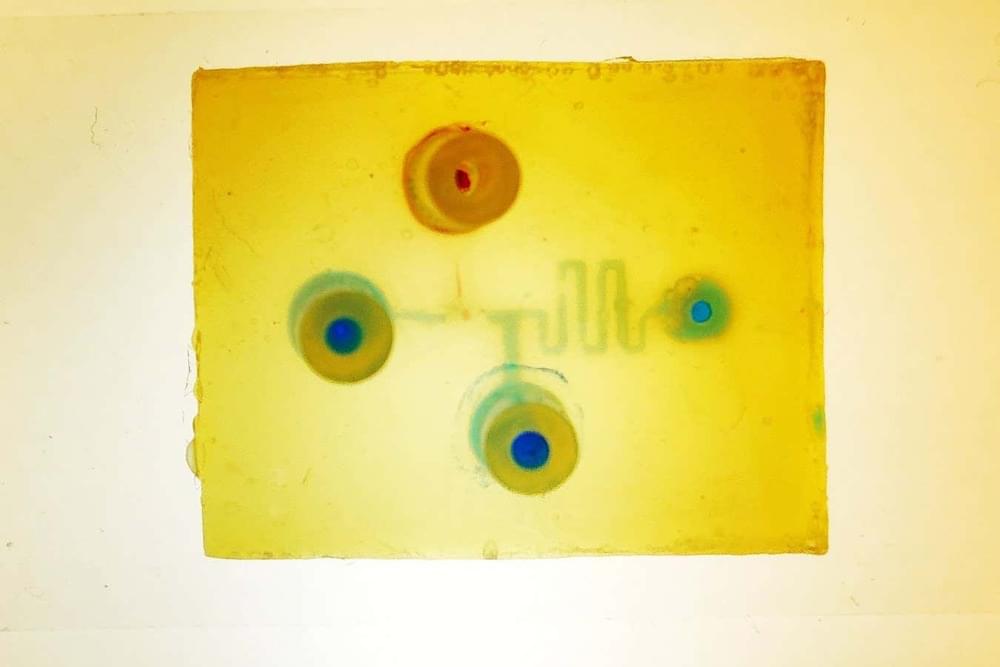SpaceX rolled the Ship 25 Starship upper-stage prototype out to the launch pad early Thursday morning (May 18) to test-fire its six Raptor engines.




Evidence that non-invasive sensory stimulation of 40 Hz gamma frequency brain rhythms can reduce Alzheimer’s disease pathology and symptoms, already shown with light and sound by multiple research groups in mice and humans, now extends to tactile stimulation. A new study by MIT scientists shows that Alzheimer’s model mice exposed to 40 Hz vibration an hour a day for several weeks showed improved brain health and motor function compared to untreated controls.
The MIT group is not the first to show that gamma frequency tactile stimulation can affect brain activity and improve motor function, but they are the first to show that the stimulation can also reduce levels of the hallmark Alzheimer’s protein phosphorylated tau, keep neurons from dying or losing their synapse circuit connections, and reduce neural DNA damage.
“This work demonstrates a third sensory modality that we can use to increase gamma power in the brain,” said Li-Huei Tsai, corresponding author of the study, director of The Picower Institute for Learning and Memory and the Aging Brain Initiative at MIT, and Picower Professor in the Department of Brain and Cognitive Sciences (BCS).
Cardiovascular diseases, such as heart attacks, are a leading cause of death worldwide resulting from a limited self-healing power of the heart. Unlike humans, zebrafish have the remarkable capacity to recover from cardiac damage. Researchers from the group of Jeroen Bakkers (Hubrecht Institute) have used the zebrafish to shed light on their regenerative success. They discovered a new mechanism that functions as a switch to push the heart muscle cells to mature in the regeneration process. Importantly, this mechanism was evolutionary conserved as it had a very similar effect on mouse and human heart muscle cells.
The results of the study, published in Science on May 18, show that examining the natural heart regeneration process in zebrafish and applying these discoveries to human heart muscle cells could contribute to the development of new therapies against cardiovascular diseases.
It is estimated that 18 million people die from cardiovascular diseases every year. Many of these deaths are related to heart attacks. In such an event, a blood clot prevents the supply of nutrients and oxygen to parts of the heart. As a result, the heart muscle cells in the obstructed part of the heart die, which eventually leads to heart failure. Although therapies exist that manage the symptoms, there is no treatment that is able to replace the lost tissue with functional, mature heart muscle cells and thereby cure the patients.

Dark matter, matter in the universe that does not emit, absorb or reflect light, cannot be directly detected using conventional telescopes or other imaging technologies. Astrophysicists have thus been trying to identify alternative methods to detect dark matter for decades.
Researchers at Tsinghua University, the Purple Mountain Observatory and Peking University recently carried out a study exploring the possibility of directly detecting dark photons, prominent dark matter candidates, using radio telescopes. Their paper, published in Physical Review Letters, could inform future searches for dark photons, which are hypothetical particles that would carry a force in dark matter, similarly to how photons carry electromagnetism in normal matter.
“Our previous work studied the conversion of dark photons into photons in the solar corona,” Haipeng An, one of the researchers who carried out the study, told Phys.org.

😗😁
Researchers are working on edible computer chips to control robots that can operate inside the human body to precisely deliver drugs before safely being digested.


Year 2015 face_with_colon_three
The genetically modified super-smart mice also proved to suffer less from anxiety, the scientists found.
For all that science has decoded the human genome, we don’t actually know what most of our DNA does, or even what a great many of our genes do. One way to elucidate what a gene does is to change it (mutate it) and see what happens.
This team from Britain and Canada found that mutating a single gene to block the phosphodiesterase-4B (PDE4B) enzyme, which is found in many organs including the brain, made mice cleverer and at the same time less fearful.
(https://isbscience.org/bio/leroy-hood/) is Co-Founder, Chief Strategy Officer and Professor, at the Institute of Systems Biology (ISB) in Seattle, as well as CEO of Phenome Health (https://phenomehealth.org/), a nonprofit organization dedicated to delivering value through health innovation focused on his P4 model of health (Predictive, Preventive, Personalized and Participatory) where a patient’s unique individuality is acknowledged, respected, and leveraged for the benefit of everyone.
Dr. Hood, who is a world-renowned scientist and recipient of the National Medal of Science in 2011, co-founded the Institute for Systems Biology (ISB) in 2000 and served as its first President from 2000–2017. In 2016, ISB affiliated with Providence St. Joseph Health (PSJH) and Dr. Hood became PSJH’s Senior Vice President and Chief Science Officer.
Dr. Hood is a member of the National Academy of Sciences, the National Academy of Engineering, and the National Academy of Medicine. Of the more than 6,000 scientists worldwide who belong to one or more of these academies, Dr. Hood is one of only 20 people elected to all three.
Dr. Hood received his MD from Johns Hopkins University School of Medicine and his PhD in biochemistry from Caltech.
Dr. Hood was a faculty member at Caltech from 1967–1992, serving for 10 years as the Chair of Biology. During this period, he and his colleagues developed four sequencer and synthesizer instruments that paved the way for the Human Genome Project’s successful mapping and understanding of the human genome. He and his students also deciphered many of the complex mechanisms of antibody diversification.
In 1992, Dr. Hood founded and chaired the Department of Molecular Biotechnology at the University of Washington, the first academic department devoted to cross-disciplinary biology.
